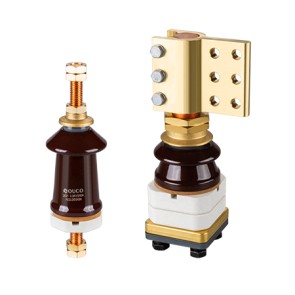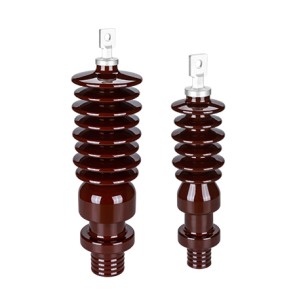IEC porcelain bushings are critical components in electrical systems. They are primarily used for insulating and supporting conductors that pass through a metal structure. These bushings are designed to withstand high voltage, ensuring the safety and reliability of electrical equipment. However, like any other electrical component, proper maintenance is essential to ensure their longevity and optimal performance. Below are several maintenance tips that can help extend the lifespan of IEC porcelain bushings.
1. Regular Inspections
Regular inspection is the first step in maintaining IEC porcelain bushings . Inspect them for visible cracks, chips, or any signs of wear. Porcelain is a fragile material, and even small cracks can lead to failure. Check for any discoloration or unusual patterns on the porcelain surface, as these could indicate electrical stress.
During inspections, also check the integrity of the sealing materials and ensure that there are no signs of leakage or moisture. Moisture ingress can significantly reduce the lifespan of porcelain bushings by compromising their insulating properties.
2. Cleaning and Dust Removal
Dust and dirt accumulation on the surface of IEC porcelain bushings can impair their performance. Regular cleaning is necessary to prevent these contaminants from creating conductive paths that could lead to electrical failures. Use a soft cloth or brush to remove dust, ensuring you don't scratch or damage the porcelain surface.
In environments with heavy pollution or salt exposure, clean the bushings more frequently. In extreme cases, washing with a mild detergent and water solution might be needed. Ensure that the bushings are thoroughly dried after cleaning to prevent moisture buildup.
3. Check for Proper Alignment
Proper alignment of the bushing is crucial for its long-term performance. Misalignment can lead to mechanical stress, which can cause porcelain breakage or accelerated wear. Make sure the bushing is properly aligned with the mounting structure and securely fastened. If any misalignment is detected, realign and tighten the fasteners as necessary.
4. Avoid Overloading
Overloading the electrical system can cause excessive heat, which might damage the porcelain bushing. Ensure that the system is operating within the recommended voltage and current limits. Continuous overloading can degrade the bushing's insulating properties and lead to failure.
Monitor the operational conditions of the electrical equipment, and if overloading is detected, address it immediately by adjusting the load or performing necessary repairs.
5. Moisture Control
Moisture is one of the primary enemies of porcelain bushings. Even small amounts of moisture can significantly reduce their insulation resistance and lead to failure. Ensure that the bushing is properly sealed and that no water can enter the internal components. Inspect the area around the bushing for any signs of water accumulation, especially during rainy seasons.
If the bushing is installed in a humid environment, consider using a dehumidifier or desiccant to control moisture levels. If moisture is found inside the bushing housing, perform a thorough inspection and remove any excess moisture.
6. Check for Physical Damage
Porcelain bushings are durable, but they are still vulnerable to physical damage. Ensure that the bushings are not subjected to mechanical stress or impacts that can cause cracks. Inspect for signs of damage, such as chips or fractures in the porcelain material. If damage is found, replace the bushing immediately to prevent further issues.
7. Ensure Proper Installation
The initial installation of the IEC porcelain bushing is crucial for its long-term performance. Ensure that the bushing is installed according to the manufacturer's specifications and IEC standards. Improper installation can lead to issues such as poor contact, excessive wear, and early failure.
8. Monitor Environmental Conditions
Environmental factors like temperature, humidity, and pollution can significantly affect the performance of IEC porcelain bushings. In areas with extreme weather conditions, additional protective measures might be needed. In coastal or industrial areas, where salt and pollutants are prevalent, it's important to use bushings with higher resistance to environmental stress.
Conclusion
Regular maintenance is key to extending the lifespan of IEC porcelain bushings. By performing regular inspections, cleaning, ensuring proper alignment, and addressing environmental factors, you can significantly improve the longevity and reliability of these critical components. Proper care will not only ensure the safe operation of electrical systems but will also help reduce costly repairs and downtime. If you have any questions about our product, please feel free to contact us.


